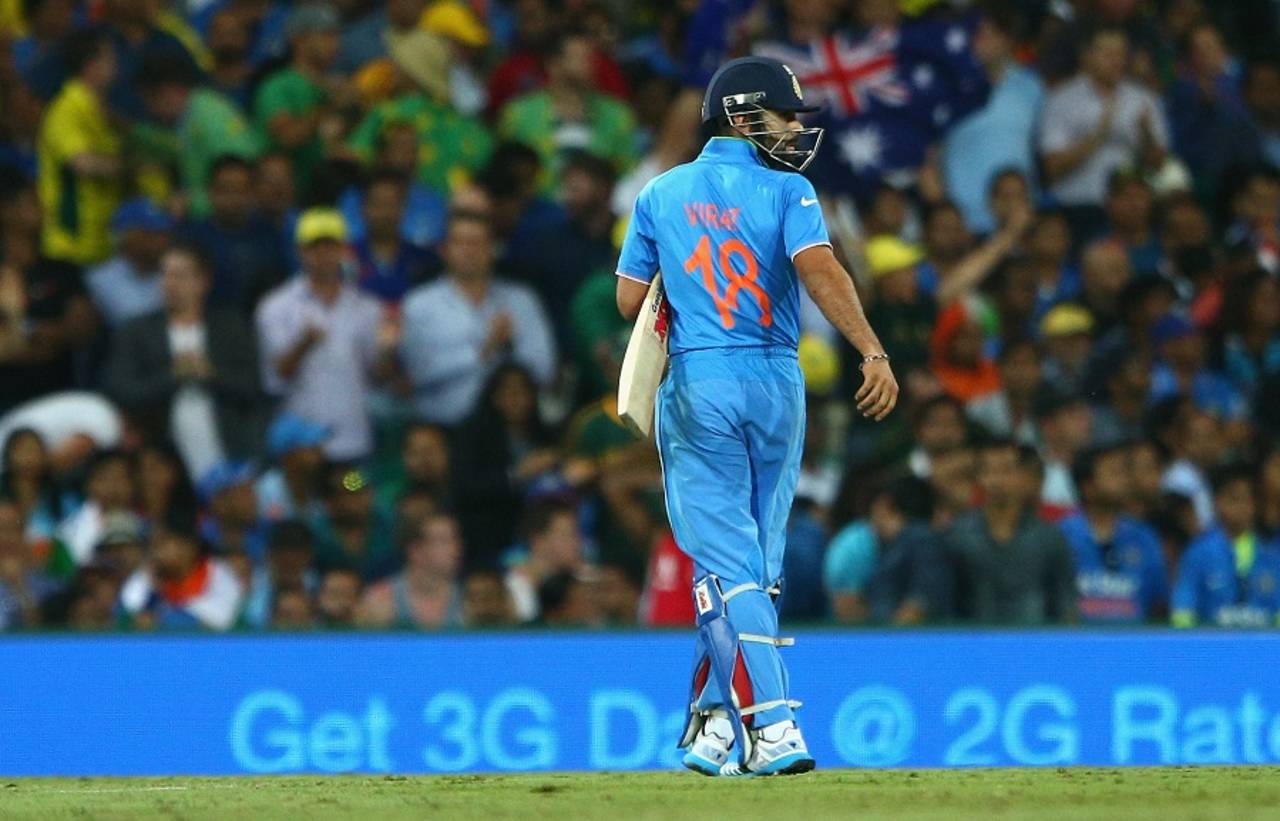Is there a pattern to Kohli's dismissals?
Chances of success are greater when Virat Kohli is new at the crease. If ever he is nervous, it is then, that the sucker ball has to be rolled out. If he isn't in the best position, you get lucky
Alagappan Muthu in Mirpur
20-Jun-2015

Maybe Virat Kohli can look back at his dismissal in the first ODI and spot a pattern • Getty Images
The celebration felt out of place. Taskin Ahmed spread his arms wide and floated away to square leg like a bird content to ride the air current. No fuss. No rush. You'd think getting Virat Kohli out for 1 might merit more emotion. And Bangladesh, along with most other things, were not lacking in that department on Thursday night.
Taskin's team-mates converged around him. High-fives were exchanged to the background of conspiratorial laughter. Was it a plan? Had they found a way to topple the best one-day chaser in the world?
The ball itself was nothing fancy: shortish, at decent pace and wide outside off. Kohli had flashed. The edge was pouched. Surely this was just a lucky break? He was early in the innings, wasn't given too many opportunities to score, saw a short and wide one, went after it and fell short.
Quite like when Rubel Hossain had dismissed him in the World Cup quarter-final. Also like when Hamish Bennett had dismissed him in January 2014 in New Zealand. Is that a pattern? Perhaps that's grasping at straws. But that is what good batsmen force upon bowlers. And to those from India, it is always a good tactic to starve them.
Kohli bats as he is. A man who likes to keep moving forward wouldn't feel comfortable being stagnant. That isn't a slight on his patience. He bolstered his reputation in Tests on the South Africa tour by leaving countless deliveries outside off. But one-day cricket is about rhythm, and one of the easier ways for a batsman to know he has it is by feeling ball on bat.
Often, all it takes is one shot. The case is truer for players as bullish as Kohli. The confidence goes up. They set up better at the crease. The ball seems to slow down because they have that much more time. Chasing 300-plus is just a matter of staying out there.
So for Kohli, you hide the ball from his reach. Chances of success are greater when he is new at the crease. If ever he is nervous, it is then, since it takes a while to get the feet moving. Then there is the general anxiety a batsman feels when the balls tick by but the runs don't catch up. Then the sucker ball has to be rolled out. If he isn't in the best position, as Kohli was on Thursday, is rooted to the crease and reaching out, you get lucky.
It is a tough art. And much of its success depends on how well and for how long Kohli is frustrated. Keeping the ball inside the wide line is a lottery. The length needs to be just a tad short so that it can't quite be cut, nor can it be further up because he likes to lunge forward and drive. Then there are requirements of pace and consistency. The process has to be repeated for a good while. Bennett bowled 15 dots to Kohli before securing the edge in Auckland. He was out for 6 then. At the World Cup quarter-final, his innings was felled at 3.
Now those are odds worth exploring.
Alagappan Muthu is a sub-editor at ESPNcricinfo